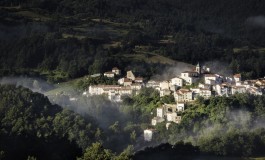Molisn’t? Il New York Time lo colloca tra i posti da visitare

“Il Molise non esiste”… un leitmotiv che impera in ogni dove. Ed invece per quanto concerne il 2020 la Molise pare prendersi una rivincita. Lo fa grazie al New York Time che in una speciale classifica ha inserito il Molise tra le mete da visitare durante l’anno che è appena iniziato. Tokyo, Bahamas, Groenlandia, sono le altre località che compaiono nella testata americana. Il Molise è al 37° posto della speciale graduatoria che conta 52 località da visistare. Una grande soddisfazione anche perché il consiglio è quello di attraversare l’Alto Molise con la “Transiberiana” facendo una puntatina anche a Sulmona e di assistere alla Ndocciata di Agnone.
Il pezzo è firmato dalla giornalista Susan Wright.
“Never heard of Molise? Don’t be embarrassed. Even many Italians haven’t been to this region in south-central Italy. But those who make the pilgrimage have discovered one of the most spectacular parts of the country and its youngest region; it was part of Abruzzo – Molise until 1963. Among the draws: Roman settlements like Saepinum (a complex of baths and a forum that rival those in Italy’s capital, but without the crowds); a pristine coastline that includes towns like Termoli, overlooking the Adriatic, with a Swabian castle; and mountains like Campitello Matese, home to a wide network of slopes for skiers. Hikers will also want to explore the routes of transumanza, the centuries-old tracks, along which sheep and oxen were herded, from Abruzzo through Molise into Puglia in the colder months. The festivals here are essential to the region’s culture. In the Christmas season, during the Ndocciata festival, torches are lit in towns like Agnone; the Carrese festival in the spring features an oxcart race through Ururi. Ditch your car and view the landscapes by train. Called the Trans-Siberian of Italy because of its remote and spectacular route, it has carriages from the 1920s carrying passengers from Abruzzo’s Sulmona to Molise’s Isernia, past forests and mountain villages”.
Vittorio Labanca








Leave a Reply
Devi essere connesso per pubblicare un commento.